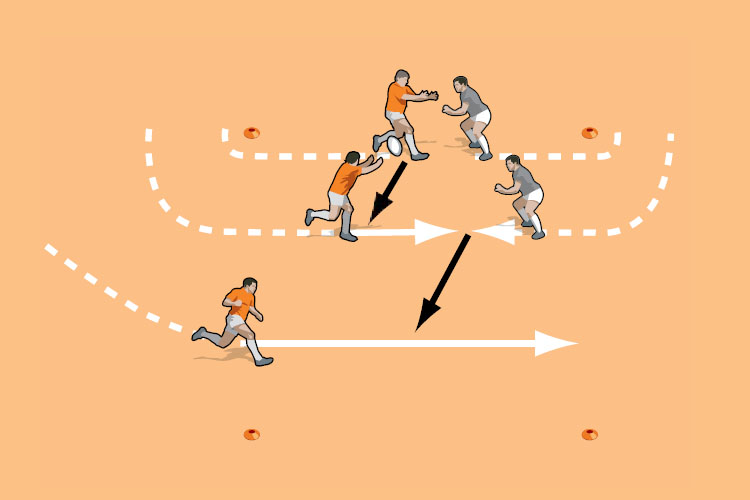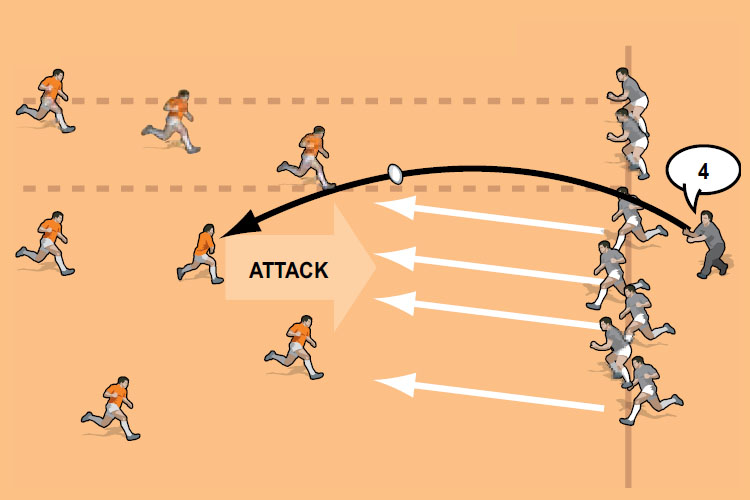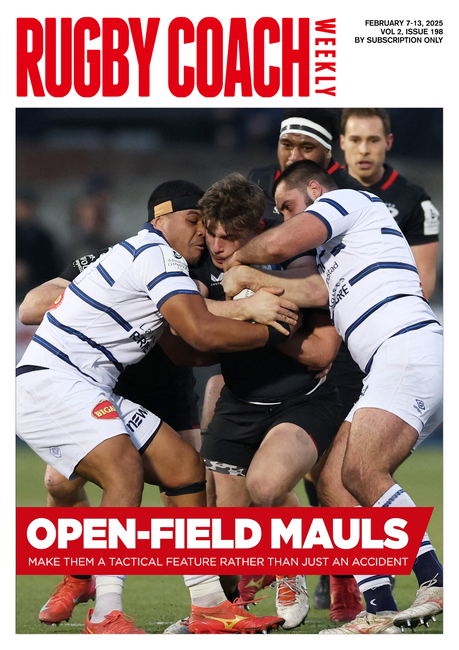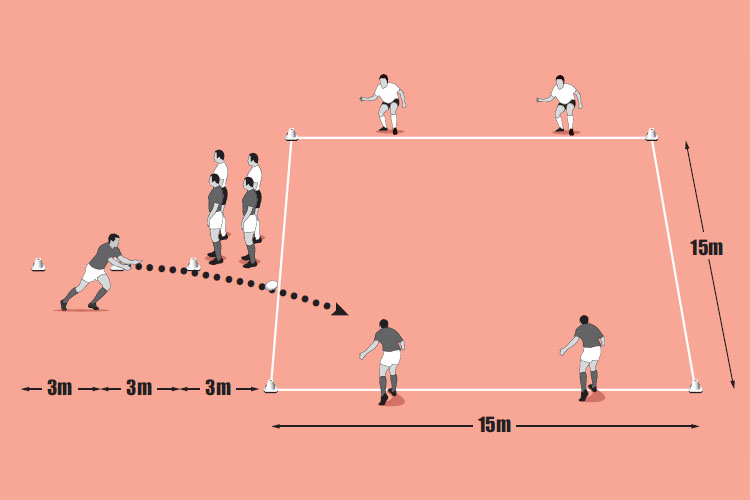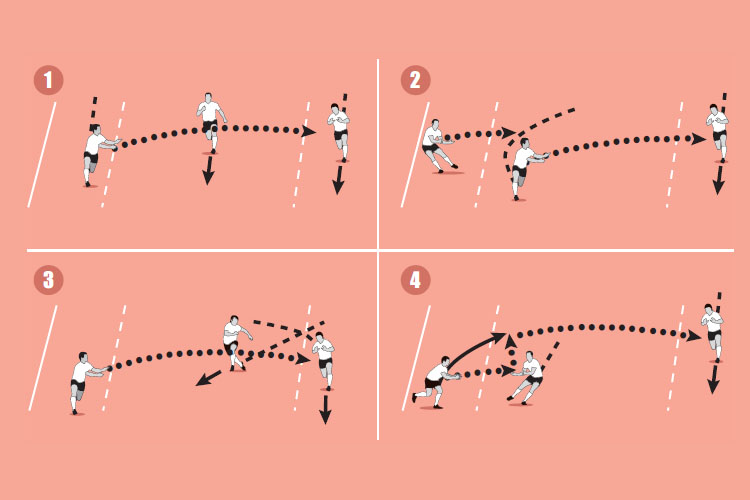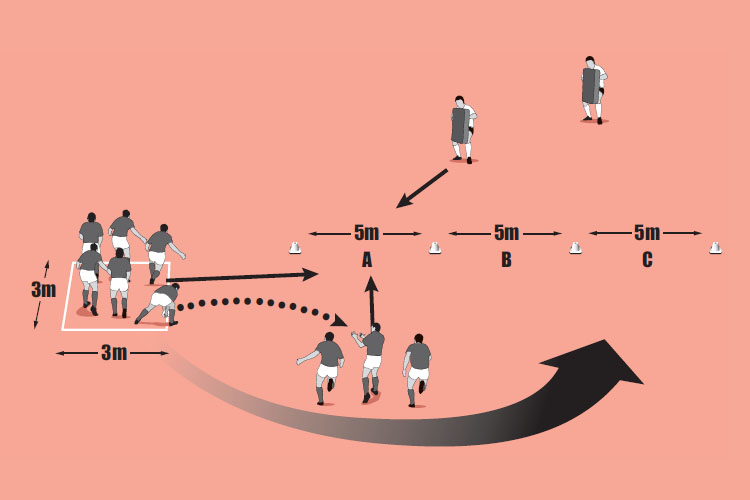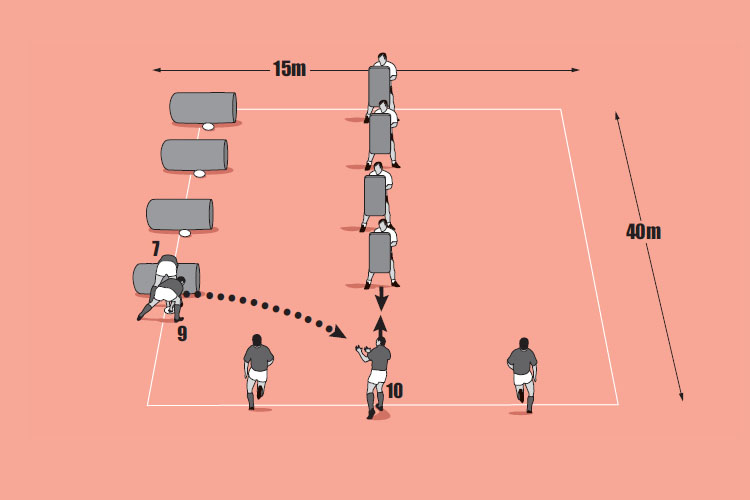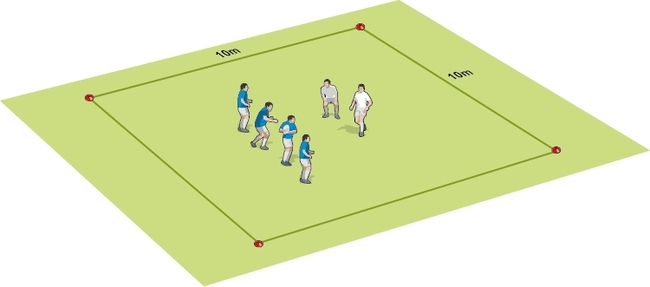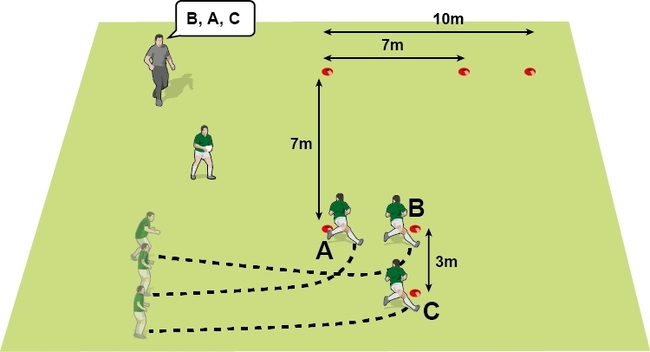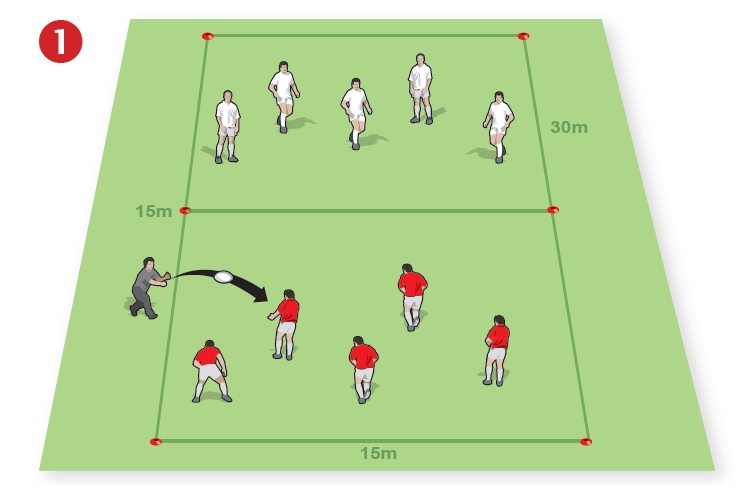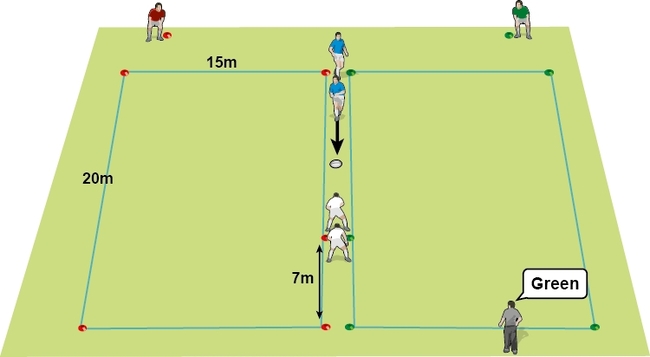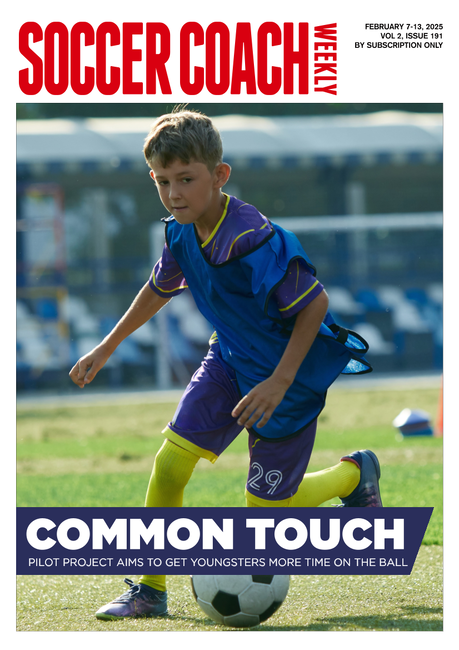Attack the space
A try from a passing movement requires your players to make the best decisions given the state of the defence in front of them. This session helps the attack to force the defence out of position and so make these decisions easier.
Warm up time: 7-10
Session time: 10-15
Development time: 10-15
Game time: 10-15
Warm down time: 7-10
What to think about
- What if the defenders are finding it too easy to cover all three attacking players?This is a common situation. It is caused by the first two attackers either not running straight or not attacking at pace to fix the defenders.
- Why does the strike runner keep overrunning the ball?He is not deep enough. Either he is too eager to get to the space and is not holding his run, or he is starting too close to the ball carrier. He needs to start deep enough to see the space and run onto the pass at top speed.
set-up
- Commit defenders by attacking them at pace.
- Strike runner: arrive from deep, attack the space and communicate with the ball carrier. Your run determines the success of the attack.
What you get your players to do
Set up a simple three against two game in a box. The players start as shown in the diagram, with one of the attacking players starting five to ten metres behind the others. The first two attacking players have to create space for the strike runner to attack. He has to see the space and tell the ball carrier where it is so he can take the pass unopposed.Development
- Vary the starting point of the attackers and defenders so players have to think about running different angles.
- Increase the numbers. Add one attacker and one defender and widen the channel by three metres.
Related Files
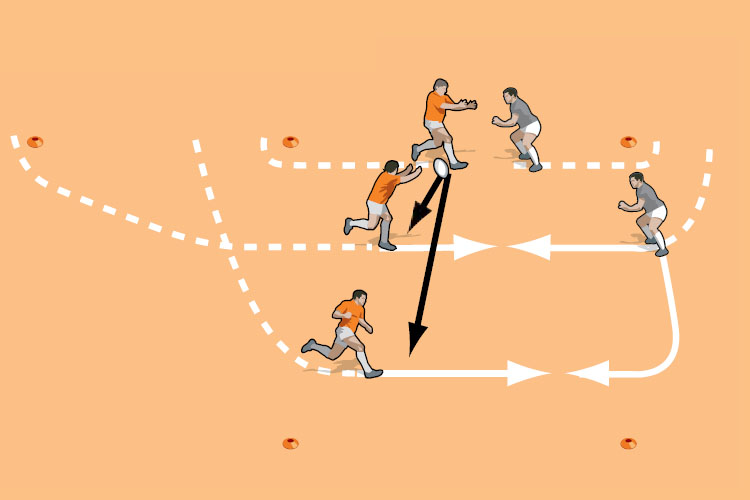
Game situation
Set up two teams of between five and eight players.The attacking team spread out and the defending team start on the try line. Call out the number of defenders you want in play and throw the ball into the pitch. The attacking team have one phase to create space and score. If a player in possession is tackled, and unless they can offload immediately, the attack stops. Each team has five attacks before swapping over.What to call out
- “Ball carrier: run straight to commit the first defender.”
- “Strike runner: hold your run until you can see the space, then accelerate into it.”
Newsletter Sign Up
Coaches Testimonials

Gerald Kearney, Downtown Las Vegas Soccer Club

Paul Butler, Florida, USA

Rick Shields, Springboro, USA

Tony Green, Pierrefonds Titans, Quebec, Canada
Subscribe Today
Be a more effective, more successful rugby coach
In a recent survey 89% of subscribers said Rugby Coach Weekly makes them more confident, 91% said Rugby Coach Weekly makes them a more effective coach and 93% said Rugby Coach Weekly makes them more inspired.
Get Weekly Inspiration
All the latest techniques and approaches
Rugby Coach Weekly offers proven and easy to use rugby drills, coaching sessions, practice plans, small-sided games, warm-ups, training tips and advice.
We've been at the cutting edge of rugby coaching since we launched in 2005, creating resources for the grassroots youth coach, following best practice from around the world and insights from the professional game.
